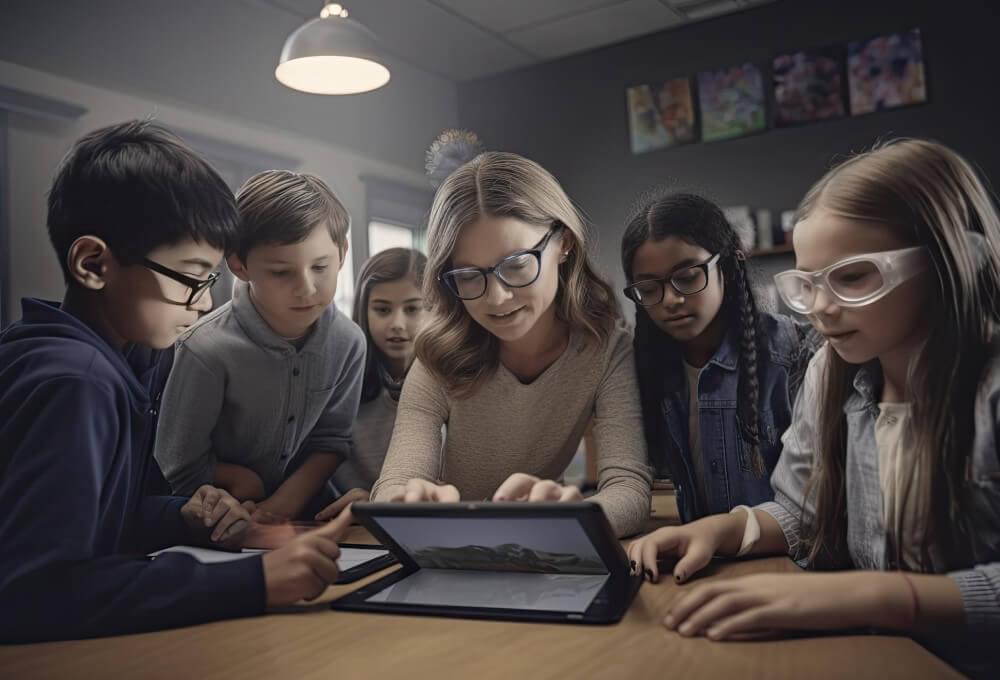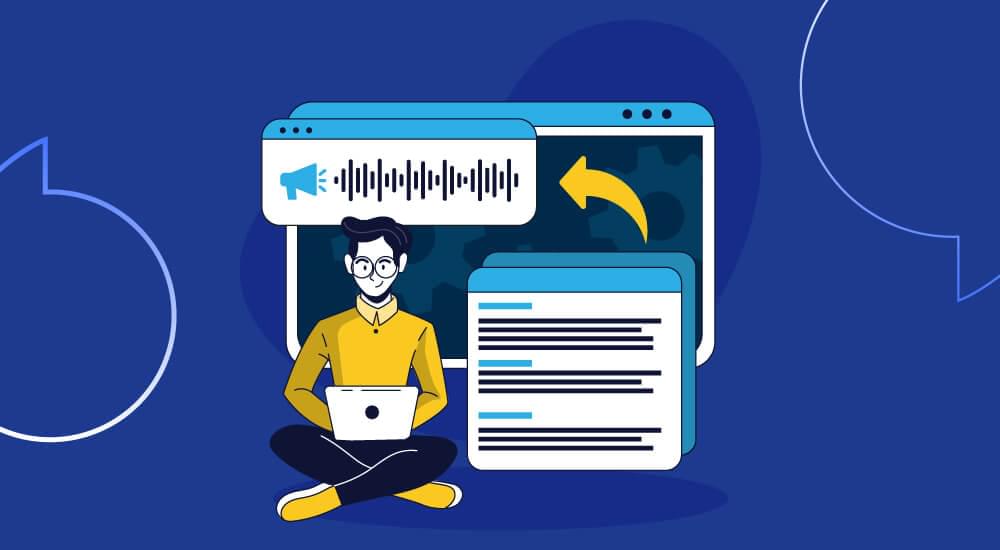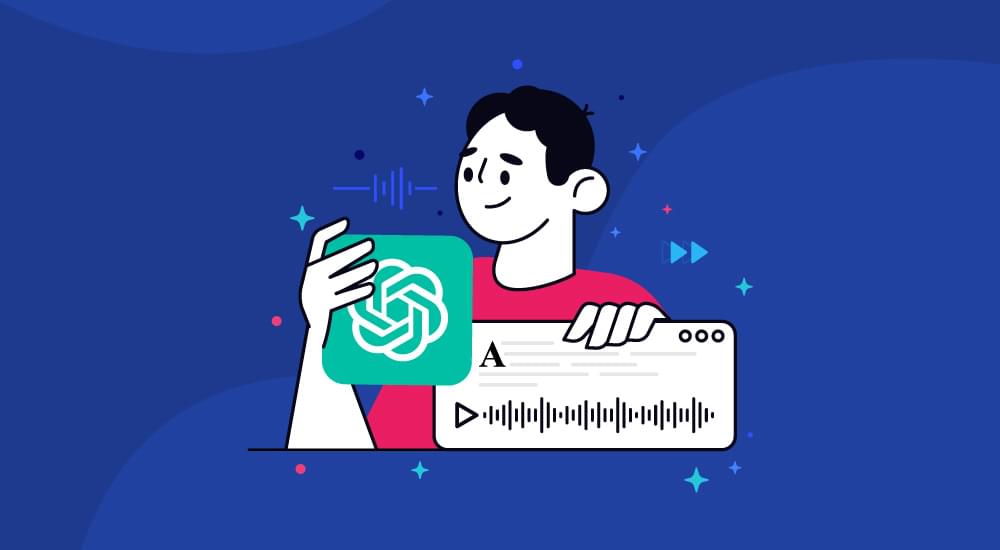text to speech tutorials
How TTS is Enhancing E-learning Platforms?
“Online learning is not the next big thing, it is the now big thing.”
- Donna J. Abernathy
We can all agree that digital education is taking center stage in e-learning platforms. These platforms are now considered necessary in the modern education system. With text-to-speech (TTS) technology, lectures are just a click away, study materials are at your fingertips, and your only commute is from your bed to your desk! Educational TTS (text-to-speech) is enhancing the digital learning experience. Now, you can have your study material narration in a clear voice that engages your senses.
In this blog, we’ll shed light on the role and benefits of educational TTS (text-to-speech). Let’s see how it can benefit you, too.
Key Takeaways
- Educational TTS (text-to-speech) breaks down barriers for visually impaired learners, providing an inclusive learning environment.
- Customizable TTS (text-to-speech) options cater to your preferences, creating a personalized and practical learning experience.
- Studies reveal that TTS (text-to-speech)positively impacts oral reading fluency, significantly increasing words read per minute.
- TTS (text-to-speech) seamlessly integrates into various devices, offering flexibility and accessibility for learners across platforms.
- Statistics demonstrate the effectiveness of TTS (text-to-speech), including improvements in user satisfaction, engagement, and learning outcomes.
What is Text-to-Speech Technology?

Text-to-speech (TTS) is a form of assistive technology designed to read digital text aloud, often referred to as ‘read aloud’ technology. This tool becomes especially valuable with just a click or a tap as it transforms written words on a computer or any digital device into spoken audio. TTS is a crucial component of digital enablement, enhancing accessibility and user experience across various platforms.
Educational TTS is a helpful resource, particularly for kids or teenagers facing challenges in reading or language barriers. Beyond helping with reading difficulties, TTS can also support children in writing, editing tasks, and enhancing focus. TTS technology can make an immense difference in online learning. It can quickly create study material narration for you as a personalized lecture voiceover for a more engaging learning experience.
How Does Educational TTS Work?
Text-to-Speech (TTS) is a versatile technology compatible with various personal digital devices such as computers, smartphones, and tablets. It goes beyond reading standard text files like Word and Pages documents it can even read content from online web pages.
The best part is that the voices are computer-based, allowing for adjustable reading speeds – a feature beneficial for adapting to individual preferences. The quality of voices varies, with some remarkably sounding human, and there are even options that mimic the voice of a child.
A noteworthy aspect of many educational TTS tools is the simultaneous highlighting of words as they are spoken aloud. This synchronization helps students by providing a visual connection to the spoken words, enhancing the learning process.
Additionally, some TTS tools incorporate Optical Character Recognition (OCR) technology. This advanced feature enables TTS to read text from images, making it possible for you to capture a photo of a street sign and have the words on the sign converted into audio.
TTS technology can make learning easier by turning educational content into study material narration and providing personalized lecture voiceovers. Moreover, TTS serves as valuable audio learning aids, improving the accessibility and engagement of educational materials.
The Diverse Benefits of Educational TTS

The advantages of integrating TTS in e-learning platforms are more than just accessibility. TTS has become a cornerstone in creating an inclusive, diverse, and effective educational environment by breaking down barriers for visually impaired learners, fostering global collaboration, and providing personalized learning experiences. Let’s have a look:
Helping Learners with Visual Impairments
Text-to-Speech (TTS) technology promotes inclusivity, especially for students with visual impairments. Educational TTS provides an incredible solution for those who may struggle with traditional text-based learning. By converting written content into spoken words, TTS ensures that anyone with visual challenges can access study material narration easily. It breaks down barriers and opens doors to a more inclusive learning environment.
In a research, the impact of TTS technology on the reading comprehension and oral reading fluency (ORF) outcomes for secondary students with learning disabilities was explored. The findings from the study discovered a notable improvement in participants’ oral reading fluency, calculated by an increased rate of words read per minute at the end of the four-week observation period.
Supporting Diverse Learning Styles and Preferences
Every student is unique, with distinct styles and preferences. Educational TTS caters to this diversity by offering a versatile learning tool. Whether a student prefers auditory learning or a combination of visual and auditory inputs, TTS accommodates various learning styles. The option to listen to study materials or have lecture voiceovers ensures that education is not one-size-fits-all, creating a more personalized and effective learning experience.
Multilingual Support
In e-learning platforms, language should never be an obstacle. TTS breaks down language barriers by offering multilingual support. Students from diverse linguistic backgrounds can access study material narration in their native languages, promoting a more inclusive educational experience. It facilitates comprehension and encourages participation from a broader, international audience.
Enabling Global Participation and Collaboration
Educational TTS transforms e-learning platforms into global hubs, building collaboration among students worldwide. By supporting multiple languages, TTS facilitates communication and collaboration on a global scale. It enriches the learning experience by exposing students to diverse perspectives and prepares them for a multicultural, interconnected world.
Customizable Learning Experiences
One of the key advantages of TTS in e-learning is the ability to create customizable learning experiences. Students can enjoy customization by adjusting the pace, tone, and style of study content narration. This adaptability ensures that each student can learn in a way that suits their preferences, leading to a more effective and enjoyable learning process.
Catering to Every Student’s Needs and Preferences
Personalization goes beyond just pace and tone TTS can be fine-tuned to cater to specific needs. Whether it’s emphasizing certain concepts, providing additional explanations, or accommodating specific learning preferences, educational TTS adapts to everyone. This level of personalization creates a sense of ownership over one’s learning journey, enhancing motivation and overall educational outcomes.
Who Can Benefit from Educational TTS?
Text-to-speech (TTS) technology is helping out various groups of students, especially those facing challenges like dyslexia or diagnosed learning disabilities like ADHD. For these students, educational TTS becomes a life-savor by audibly reading out words, helping them understand spelling and pronunciation.
Some TTS tools assist students in writing through features like word prediction and phonetic spell checking. This study material voiceover aids those with learning disabilities, benefits students with limited commuting time, and helps younger students grapple with reading and pronouncing new words.
Moreover, there’s evidence supporting the effectiveness of TTS as a learning tool for children with autism and emotional disabilities, showcasing its versatility in addressing various educational needs.
Accessible on any device and compatible with text files and web pages, TTS is gaining popularity among parents advocating for its use in schools. With TTS technology, you can easily turn study materials into narrated content, offering a personalized lecture voiceover feature and acting as audio learning aids.
Why Educational TTS is Beneficial for Students?
Text-to-speech tools are now considered a valuable necessity for teachers and students alike. A research experiment was conducted to explore the impact of using educational TTS teaching reading, specifically focusing on various domains of reading fluency. The findings revealed notable improvements in word stress, word intonation, pitch contour, and overall fluency, highlighting the positive effects attributed to the utilization of TTS software.
Let’s discuss some reasons why study material narration is important for the students:
Enhanced Focus and Understanding
- Studies consistently highlight how text-to-speech technology shifts the focus from the act of reading to comprehending the content.
- Resulting in a deeper understanding of materials, students are more likely to retain information, boosting both confidence and motivation.
Independence in Learning
- Text-to-speech empowers students, making them more independent learners.
- This newfound independence eases the supervision for teachers and parents and lets them track and support students’ progress effectively.
Boosting Word Recognition and Error Correction
- TTS proves effective in improving word recognition skills among students.
- Students become more adept at identifying and correcting mistakes in their written work, building a sense of self-correction.
Preference for Computer-Generated Voices
- Despite audio books’ popularity, computer-generated voices in TTS showcase significant benefits.
- Substantial evidence supports the claim that TTS is a valuable tool for students across age groups.
Advanced Technology for Engaging Voices
- Recent advancements in TTS technology enable computers to analyze the meaning of each word before reading it aloud.
- This analysis leads to a nuanced and engaging delivery, adapting the overall tone to the content being read.
Types of TTS Tools Widely Used
Text-to-speech (TTS) functionality has become a standard feature on various devices, including computers, smartphones, and tablets. This technology helps read digital text on various document types and web pages. Text-to-speech tools can be broadly categorized into four main types:
#1: Built-in TTS:
Built-in TTS tools are usually present as a default feature on most devices, such as smartphones, laptops, tablets, and Chromebooks. This type is widely adopted due to its versatility in catering to a diverse range of students.
#2: Web-based TTS Tools:
They are implemented on websites to ensure broader accessibility to information for all users. Web-based text-to-speech generators are user-friendly, and you don’t have to go through the long process of installing the software.
#3: TTS Apps:
Various applications offer Text-to-speech capabilities on devices where it is not a built-in feature. Some web browsers, like Chrome, also incorporate TTS features, providing additional accessibility.
#4: TTS Software Programs:
These are Integrated into literacy software programs designed to support students in developing reading skills. Notable examples include the Reading Coach & Reading Progress tool, part of Microsoft’s Learning Accelerators, aimed at enhancing students’ learning experiences.
Best Practices for Easy Integration of TTS in E-learning

Text-to-speech (TTS) technology can significantly enhance the overall educational experience in the e-learning industry. However, incorporating TTS can be a little challenging sometimes for beginners.
Here are some basic and best practices for integrating TTS into e-learning platforms:
User-Friendly Interfaces
Going through educational content should be easy for students. The first thing to focus on is to have a user-friendly interface in TTS applications to ensure a smooth and happy experience. Clear navigation, easily accessible controls, and simple functionalities create a positive user experience. It encourages engagement and minimizes potential frustrations for the students who are eager to learn.
Customization Options for Learners
Customization is a thing you should never forget. If you want to attract students from diverse backgrounds and learning preferences, then providing customization options is paramount. TTS technology allows students to adjust the pace of lecture voiceovers, choosing preferred accents or emphasizing specific aspects during study material narration. Customization lets students engage with the content in a way that suits their own learning styles.
Collaboration with Educational Experts and Content Creators
Effective collaboration is important for a successful integration. Partnering with educational experts and content creators ensures that TTS is not just a feature but an authentically sound tool. Educational experts can provide knowledge into the best practices for using TTS in different subjects, while content creators can optimize materials for smooth lecture voiceover narrations. This collaboration makes sure that TTS is aligned with educational goals and enhances the overall quality of the learning content.
Educational TTS technology is a multi-faceted process that is more than implementation. You can enjoy the full potential of TTS by prioritizing user-friendly interfaces and customization options and building collaboration with educational experts.
Bottom Line!
As we can see, Text-to-speech (TTS) technology has emerged as a transformative solution across various industries. The impact of TTS in e-learning is undeniable. It is helping numerous students worldwide, breaking barriers for visually impaired students, and creating global collaboration through multilingual support. The versatility of TTS, with its user-friendly interfaces and customization options, brings a personalized touch to education, enhancing engagement and learning outcomes. Join us to explore and experience the wonderful impacts of educational TTS by using an ideal web-based text-to-speech generator!









